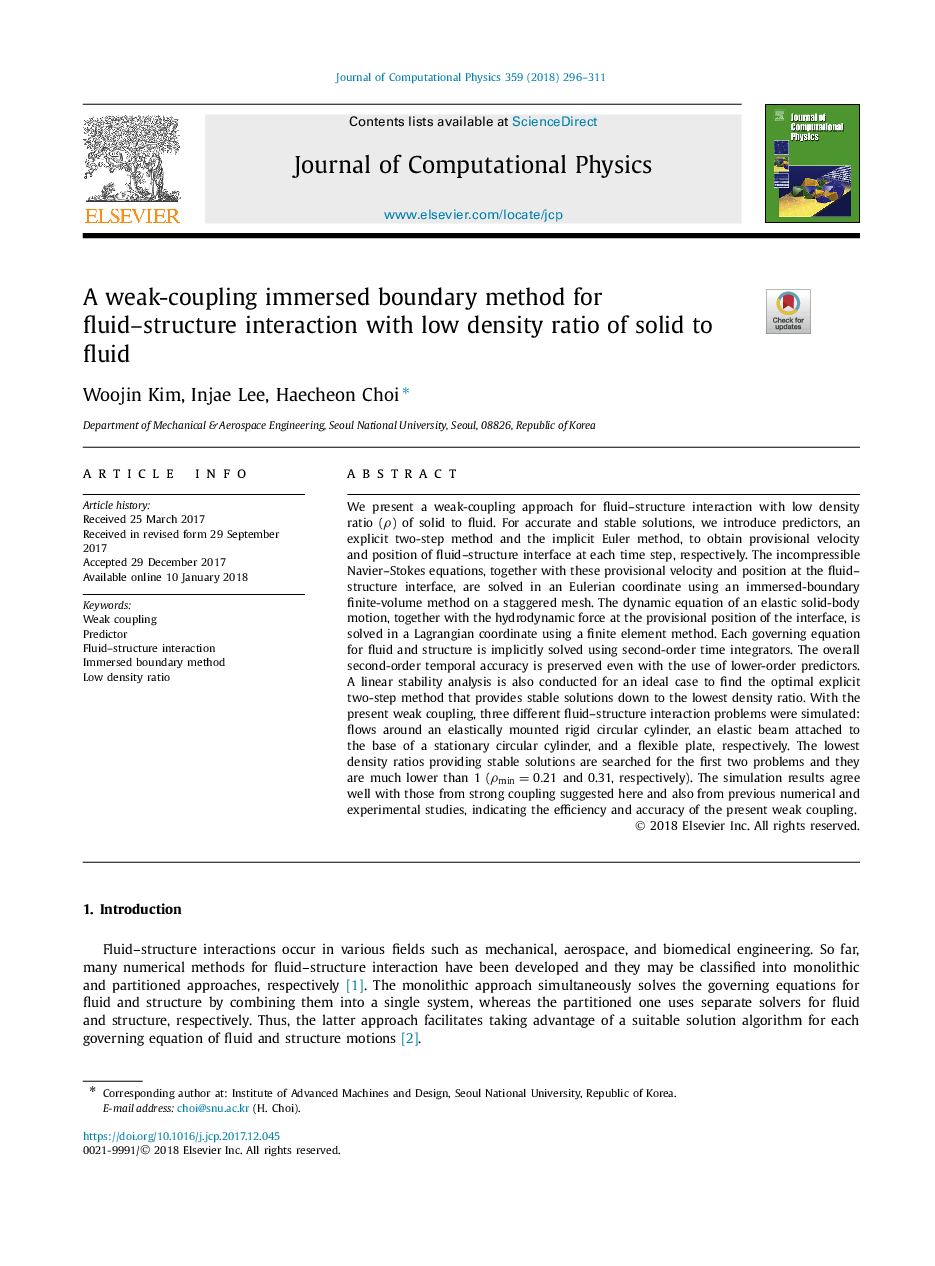| Article ID | Journal | Published Year | Pages | File Type |
|---|---|---|---|---|
| 6929079 | Journal of Computational Physics | 2018 | 16 Pages |
Abstract
We present a weak-coupling approach for fluid-structure interaction with low density ratio (Ï) of solid to fluid. For accurate and stable solutions, we introduce predictors, an explicit two-step method and the implicit Euler method, to obtain provisional velocity and position of fluid-structure interface at each time step, respectively. The incompressible Navier-Stokes equations, together with these provisional velocity and position at the fluid-structure interface, are solved in an Eulerian coordinate using an immersed-boundary finite-volume method on a staggered mesh. The dynamic equation of an elastic solid-body motion, together with the hydrodynamic force at the provisional position of the interface, is solved in a Lagrangian coordinate using a finite element method. Each governing equation for fluid and structure is implicitly solved using second-order time integrators. The overall second-order temporal accuracy is preserved even with the use of lower-order predictors. A linear stability analysis is also conducted for an ideal case to find the optimal explicit two-step method that provides stable solutions down to the lowest density ratio. With the present weak coupling, three different fluid-structure interaction problems were simulated: flows around an elastically mounted rigid circular cylinder, an elastic beam attached to the base of a stationary circular cylinder, and a flexible plate, respectively. The lowest density ratios providing stable solutions are searched for the first two problems and they are much lower than 1 (Ïmin=0.21 and 0.31, respectively). The simulation results agree well with those from strong coupling suggested here and also from previous numerical and experimental studies, indicating the efficiency and accuracy of the present weak coupling.
Related Topics
Physical Sciences and Engineering
Computer Science
Computer Science Applications
Authors
Woojin Kim, Injae Lee, Haecheon Choi,
